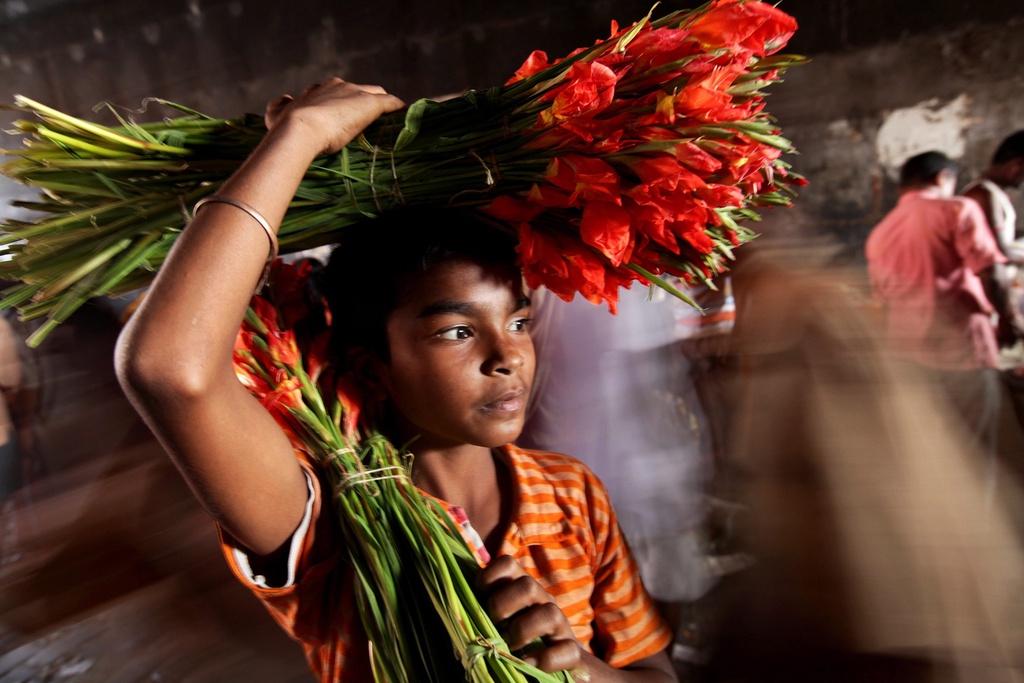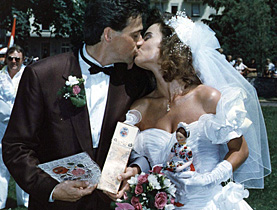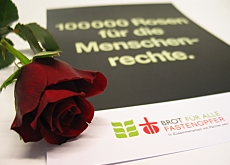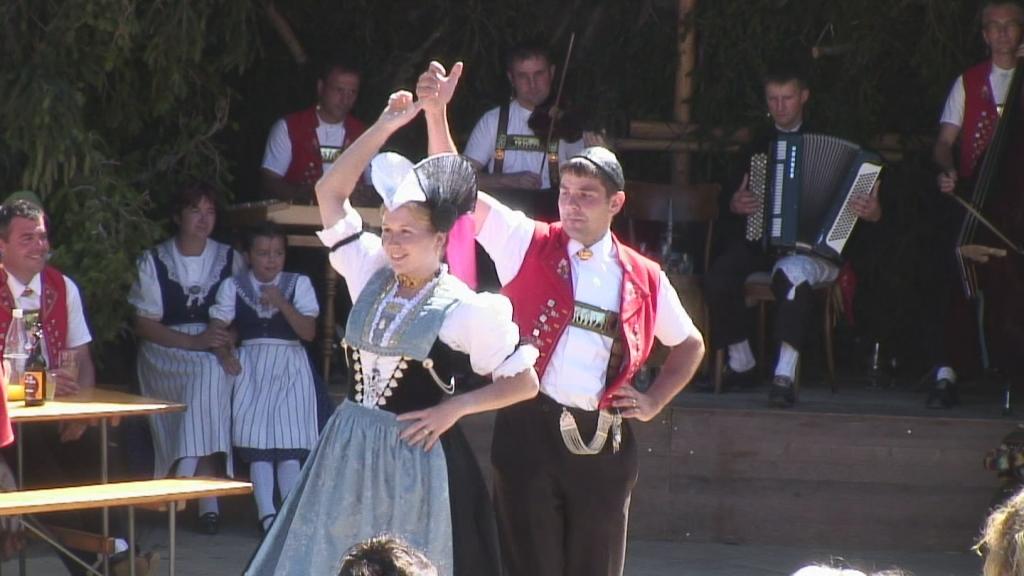Swiss flower industry is no bed of roses

The Swiss splash out around SFr125 ($136) each a year on cut flowers, more than any other European nation. Sales reach their peak on February 14 – Valentine’s Day.
Yet seven out of ten flowers bought in Switzerland are grown abroad and Swiss growers struggle to compete in the tough market dictated by low prices.
“Producing flowers in Switzerland is more and more complicated. To compete it’s essential to produce cheaply and this entails investing in air-conditioning, heating and greenhouses,” Beat Thomann, director of the Zurich Flower Exchange, told swissinfo.ch.
The association, which brings together 200 flower growers, promotes home-grown flowers. Its philosophy is that only when local producers are unable to offer what the market demands will it turn to flower importers.
According to the Zurich flower market, 30 per cent of cut flowers are grown in Switzerland; customers seek quality, freshness, flowers that last and appreciate a certain “Swissness”, it says.
Of the remainder, 40 per cent come from the Netherlands, 14 per cent from South America, 11 per cent from Italy and five per cent from Africa.
Valentine
February and the run-up to Valentine’s Day is the busiest time of the year for florists, representing around 20 per cent of annual sales.
Switzerland’s robust economy has allowed it to hold its head above water during Europe’s recent troubles. In 2010 the flower trade grew by five per cent and it is thought that 2011 also saw progress.
Gabi Hophan, marketing director for Fleurop, which has 430 members with shops dotted around the country, was generally optimistic about business.
“We are satisfied with the way things have been going and last year we saw a small but steady increase in sales, which was down to innovative promotional offers around Valentine’s Day, Easter and Mother’s Day,” she said.
Sustainable flowers
In the area of free trade Switzerland has been a pioneer in raising awareness.
In 1990 the group Flower Coordination Switzerland launched a “flowers of death” campaign, together with Greenpeace and the WWF. Spectacular flower arrangements were exhibited alongside images of workers being exploited in countries like Colombia.
The initiative is said to have borne fruit and consumers are now more familiar with fair trade flowers and premiums imposed on the Swiss retail price.
“Around 20 per cent of our customers usually order roses carrying the Max Havelaar [fair trade] label. This is a sign that they are ready to pay a little bit more to promote fair trade,” said Hophan.
But this vision is not shared by flower growers.
Cheap, cheap
“Of course customers prefer to buy flowers that promote fair trade, but they are not prepared to pay for it. In this respect, nothing has changed compared with previous years,” said Thomann.
“The strength of the Swiss franc has lowered the prices of European products and more customers are prepared to travel to Germany, France and Italy to buy food, clothing, furniture, cars and of course flowers. As producers we have had to be very careful with the prices. Swiss buyers are not ready to pay more than before and this won’t change in the future.”
The big distributors play a key role in the ongoing price war.
“Flower sellers often lose out to Coop, Landgard and other big firms, which sell arrangements at very low prices. Over the past year, for example, prices have fallen by 12-15 per cent due to fluctuations in the Swiss franc-euro exchange rate. And I think they will stay at this low level, or they could drop even further.”
In the face of lower prices, the Swiss can only compete on quality, or Swissness, say specialists.
“There is a group of very competitive Swiss producers, especially in the rose market. But national roses are only grown between May and October because the necessary heating systems are very expensive,” said Thomann.
But people are constantly on the look out for new opportunities.
Agricultural specialists from Agroscope Changins-Wädenswil Research Centre in Conthey spent ten years cultivating the seeds of a new flower called Helvetia, a variety of the legendary edelweiss, but which is bigger and more resistant. And a similar process has been carried out with Swiss daisies.
Around 70 per cent of all flowers bought in Switzerland are from three varieties: rose, chrysanthemum and lily.
Only ten per cent of imported flowers have fair trade labels, unlike products like bananas, where it rises to 25 per cent.
The average price of a bouquet ordered from florists that are members of the Fleurop-Interflora group is SFr85.
By contrast, the large supermarket chains like Migros offer mini-bouquets of 20 roses (Max Havelaar fair trade) for SFr13 and a dozen tulips for SFr7.50.
Coop offers simple flower arrangements for SFr20 but average Valentine’s Day bouquets cost SFr55.
Switzerland is a keen supporter of the sale of local flowers. In 2001 it launched the “Floriance” quality label, backed by the Association of Swiss Florists, the Swiss Gardeners’ Association, the Zurich Flower Exchange, the Association of Wholesale Flower Merchants and the Federal Agriculture Office.
In 2011 Max Havelaar label launched a campaign at Migros and Coop asking customers to pay SFr1 extra for a bouquet of flowers which would be earmarked for development projects in poor countries.
(Translated from Spanish by Simon Bradley)

In compliance with the JTI standards
More: SWI swissinfo.ch certified by the Journalism Trust Initiative





You can find an overview of ongoing debates with our journalists here. Please join us!
If you want to start a conversation about a topic raised in this article or want to report factual errors, email us at english@swissinfo.ch.